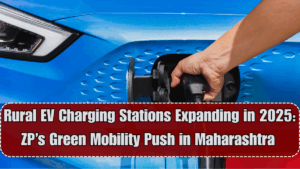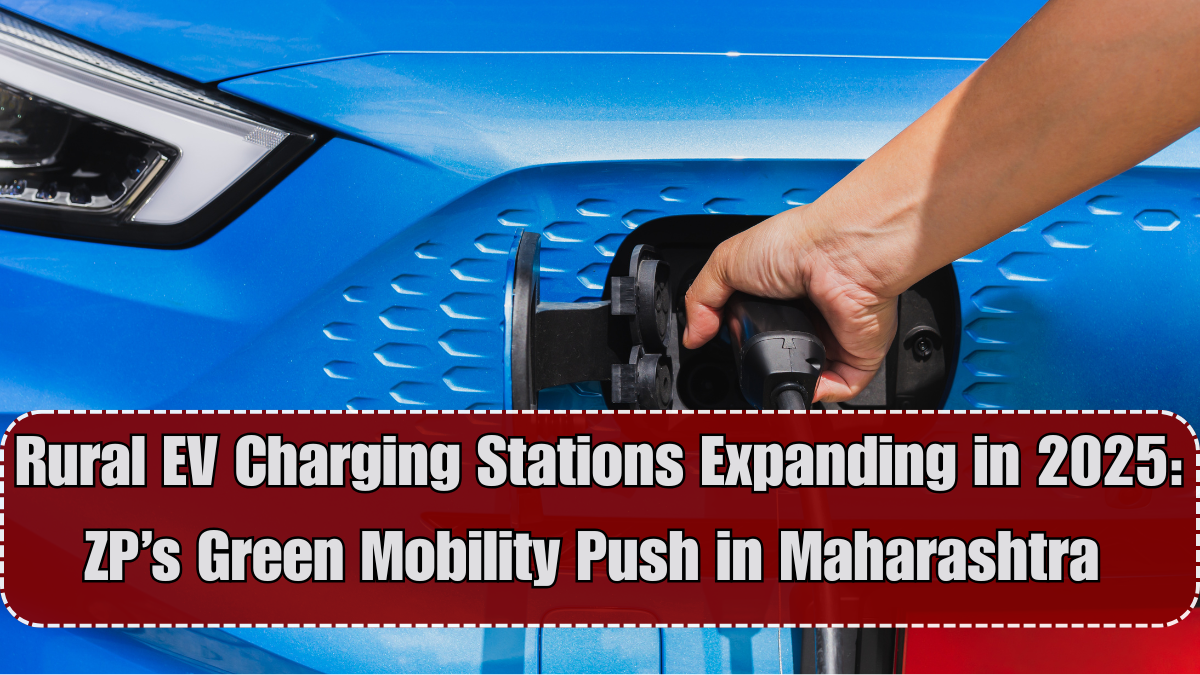The push for clean mobility is no longer limited to metro cities. In 2025, Rural EV Charging Station Expansion 2025 is becoming a significant milestone in Maharashtra’s green mission. The Zilla Parishad (ZP) has launched a dedicated infrastructure drive across villages and small towns, ensuring that the electric vehicle (EV) revolution reaches the heart of India’s countryside.
This bold step is part of a broader initiative to make rural areas part of the EV Rural India transformation. With increased availability of affordable EVs and scooters, demand for charging stations in smaller regions has surged, prompting authorities to act fast. From farmers to teachers and small shopkeepers, the rural population is now slowly transitioning to cleaner transport.

What Is the ZP EV Charging Expansion About?
The ZP Project initiated under the Green Maharashtra Program aims to install over 800 rural EV charging stations across districts like Nashik, Solapur, Satara, and Chandrapur by December 2025. Each block (taluka) will have at least 5 strategically placed stations to serve local needs.
Highlights of the project:
-
Solar-powered chargers for low grid dependency
-
Focus on 2-wheeler and 3-wheeler EV users
-
Locations include gram panchayat offices, mandis, health centers, and rural schools
-
Charging hubs to be integrated with the MahaEV App for real-time availability
-
Local youth trained to operate and maintain the stations
This rural EV charging station expansion 2025 is expected to boost job creation and local participation in clean energy.
District-Wise Charging Station Plan – 2025
| District | Stations Planned | Key Locations Targeted |
|---|---|---|
| Nashik | 100+ | Panchayats, markets, rural health units |
| Satara | 80 | Schools, bus stands, gram sabhas |
| Ahmednagar | 110 | Milk dairies, co-ops, colleges |
| Solapur | 90 | Mandis, government offices |
| Chandrapur | 60 | Forest dept zones, villages near highways |
The charging stations will cater to users who commute 20–40 km daily, such as local vendors, school staff, and farm transporters.
Why It Matters to EV Rural India
This expansion is not just about EVs—it’s about access. The availability of rural charging infrastructure ensures:
-
EV adoption isn’t restricted to urban elites
-
Reduced dependence on expensive petrol/diesel
-
Empowerment of rural households with affordable mobility
-
Participation in India’s net-zero goals
-
Support for local EV manufacturing in Maharashtra
As more people buy electric scooters and small e-loaders, the rural EV charging station expansion 2025 ensures they’re not left behind.
Future of Rural Charging in Maharashtra
Authorities are planning further upgrades, including:
-
Integration with solar microgrids
-
Battery-swapping hubs for faster turnaround
-
Recharge kiosks in weekly haats (markets)
-
UPI-enabled, low-cost charging stations
-
Tie-ups with private EV players for subsidies
This grassroots transformation marks a new chapter for EV Rural India, making sustainable transport truly inclusive.
FAQs
Who can use the rural EV charging stations in Maharashtra?
Any EV owner in rural areas, including farmers, shopkeepers, and school staff, can use these stations.
What types of EVs are supported?
Most chargers support 2-wheelers and 3-wheelers, including scooters, e-rickshaws, and cargo EVs.
Are these charging stations solar-powered?
Yes, many new installations are powered by solar microgrids to ensure eco-friendly and uninterrupted charging.
Is there any cost to use these rural EV charging stations?
Yes, but it’s highly subsidized. Rates start from ₹5–₹7 per kWh depending on district location.
Can I find these stations on an app?
Yes, users can locate and book slots through the MahaEV app, which provides real-time availability and payment options.
Who maintains these rural charging points?
Local youth trained by ZP and state EV agencies will manage daily operations and maintenance.
Click here to know more.
